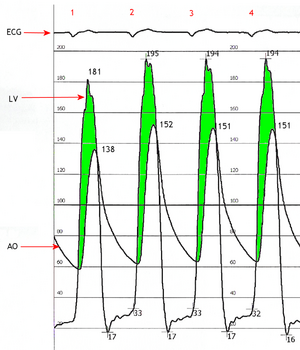PURPOSE: Aortic valve calcification (AVC) measured by multislice computed tomography (MSCT) has previously been shown to be of prognostic importance. We aimed to determine if a novel acoustic method of evaluating heart sounds in pts with valvular aortic stenosis (AS) or sclerosis is a useful alternative.
METHODS: ECG-gated acoustic data recorded from the precordial aortic area using an electronic stethoscope were subjected to energy-based continuous wavelet transformation by a laptop software program, which extract the dominant systolic frequency (DF). These were compared to AVC quantified in Agatston units (AU) by MSCT and echocardiographic indices of AS severity, determined independently. Patients were prospectively followed up for occurrence of cardiac death and symptom-driven aortic valve replacement.
RESULTS: Of 50 pts (age 68 [+ or -] 11 yrs, 58% males), 35 had lone AS of varying severity and 15 with aortic valve sclerosis. Mean aortic valve area indexed to body surface area (AVAI), AVC, DF and left ventricular ejection fraction (EF) were 0.94 [+ or -] 0.50 cm2/m2, 1037 [+ or -] 1476 AU, 103 [+ or -] 69 Hz and 62 [+ or -] 14% respectively. DF correlated significantly with AVC, maximal pressure gradient across the aortic valve (Pmax), AVAI and aortic valve resistance (r=0.62, 0.61, -0.51 and 0.60 respectively, all P<0.001). In a multivariate linear regression model incorporating AVC, AVAI and Pmax, the only independent predictor of DF was AVC (13=0.37, P=0.03). Over 15 [+ or -] 7 months, 7 pts reached the composite endpoint. Pts with events had higher DF (170 [+ or -] 65 vs 93 [+ or -] 64 Hz, P=0.005). For prediction of the endpoint, the areas under receiver characteristic curves for DF, AVC, AVAI, age and EF were 0.82(P=0.007), 0.79(P=0.013), 0.88(P=0.001), 0.50(P=NS) and 0.65(P=NS) respectively. A threshold of 145 Hz for DF provided optimal sensitivity of 86% and specificity of 81% of predicting an event.
CONCLUSION: DF derived from novel acoustic analysis of aortic valve stenosis or sclerosis correlates well with AVC by MSCT and offers prognostic information in these patients.
CLINICAL IMPLICATIONS: Acoustic analysis of heart sound may provide a simple and useful non-invasive adjunct in the management of patients with aortic valve calcification.
DISCLOSURE: Kian Keong Poh, Grant monies (from sources other than industry) National Healthcare Group (Singapore) and Singapore Heart Foundation grants.
Kian Keong Poh MB, BCh * Mark Y. Chan MBBS Hong Yang MD Lieng H. Ling MBBS National University Hospital, Singapore, Singapore
COPYRIGHT 2005 American College of Chest Physicians
COPYRIGHT 2005 Gale Group



